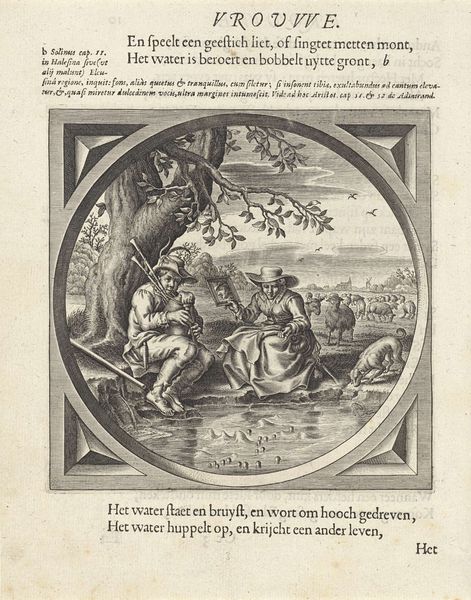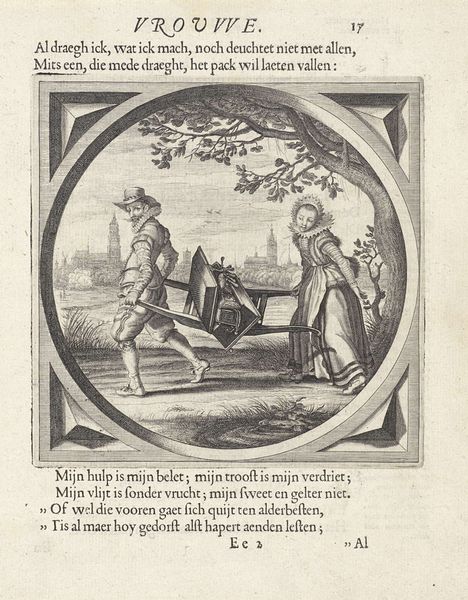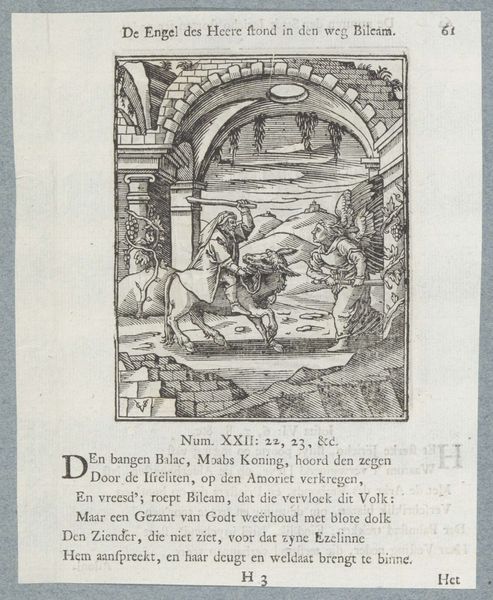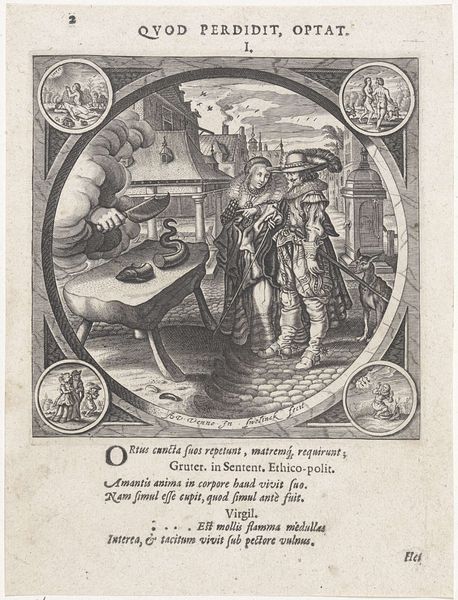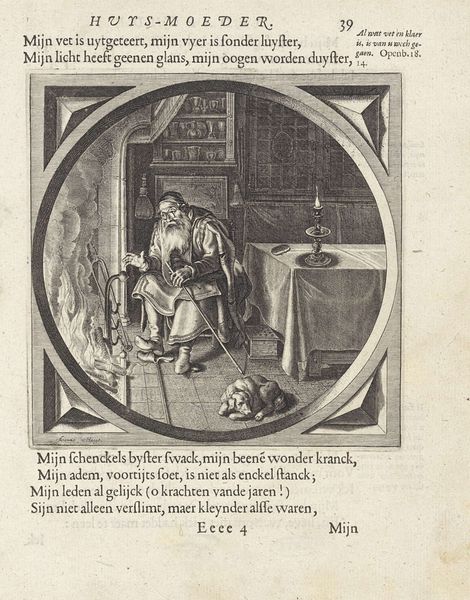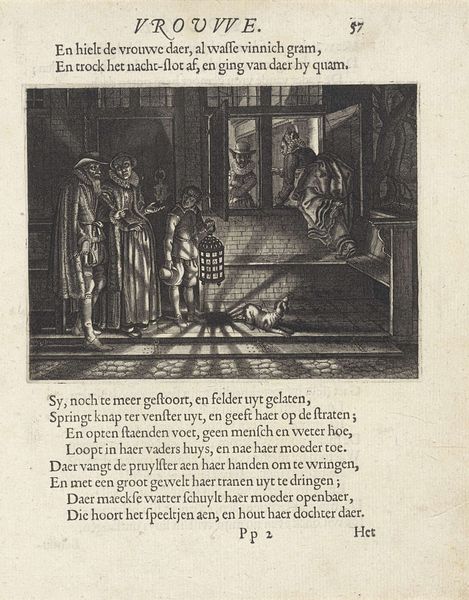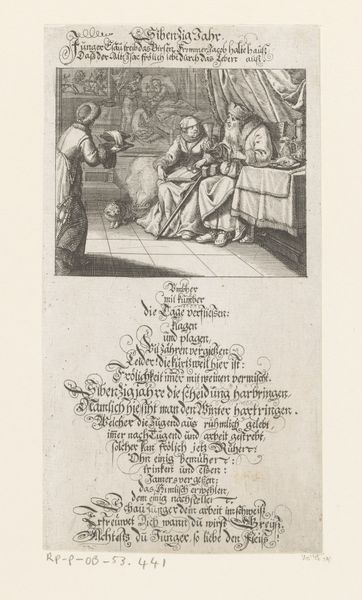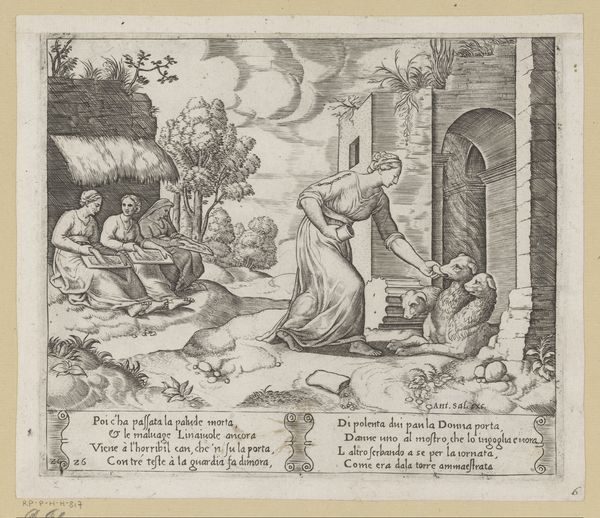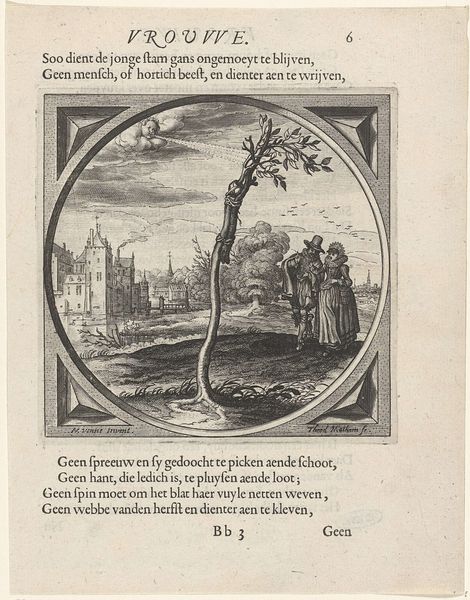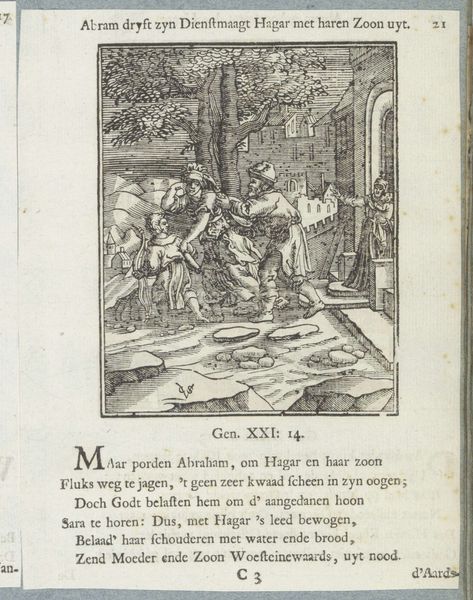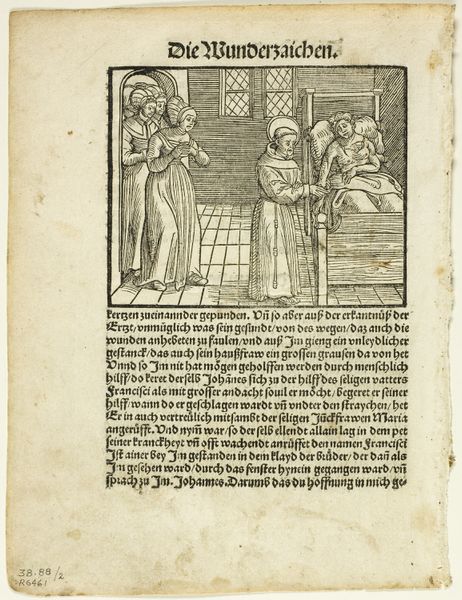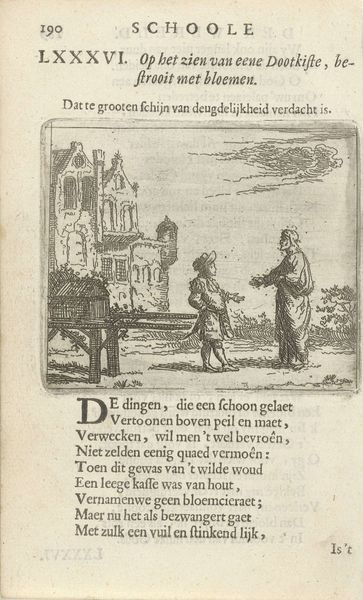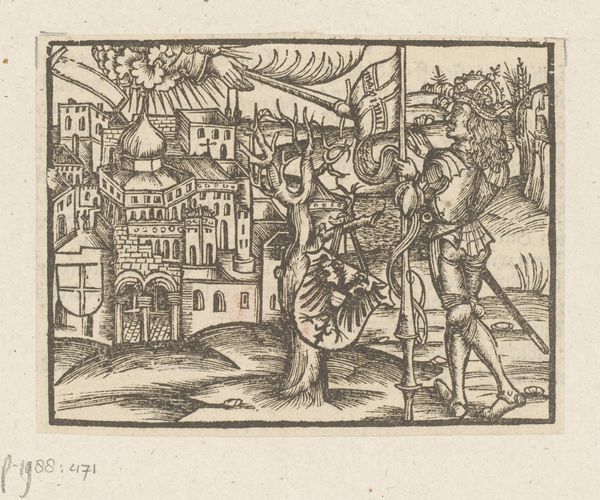
print, engraving
#
dutch-golden-age
# print
#
old engraving style
#
landscape
#
figuration
#
genre-painting
#
engraving
Dimensions: height 213 mm, width 167 mm, height 133 mm, width 133 mm
Copyright: Rijks Museum: Open Domain
Curator: I find myself drawn to the scene's tranquility. What’s your immediate reaction? Editor: I'm seeing here "Twee vrouwen bij een kip met kuikens op het water", which roughly translates to "Two women by a chicken with chicks on the water," is a print made between 1625 and 1635. It belongs to the Rijksmuseum collection. The anonymity intrigues me – it really throws open avenues for contemporary interpretation. Curator: The piece feels deceptively simple. It's more than just women by a pond, isn’t it? Those figures behind the women are positioned in a manner to create a clear racial heirarchy. Do you see the symbolism embedded within this apparently straightforward scene? The contrast in status, the backdrop hinting at broader social stratifications… It all feels deliberate. Editor: I completely agree, there are definitely elements of everyday life represented, but the "genre scene" aspect of it served, really, as the perfect canvas. The question, then, is how were these women actually perceived and positioned in relation to the domestic space that seems, at first glance, quite mundane. Curator: Precisely. Considering the visual politics, the chicken—or more precisely, the mother hen and her chicks—acts as a kind of allegorical centerpiece. Is it an invocation of some conventional ideal, a satirical comment on prescribed female roles within 17th-century Dutch society, or something else entirely? Editor: Absolutely. By placing them in the context of 17th-century Dutch society, the image invites a reevaluation of these power structures and the lived experience of those most affected by them. Also, the medium itself—engraving— speaks to wider issues about distribution and circulation. Whose story gets told, and how? Curator: So, we’re talking about art's agency as a cultural mirror and its power to challenge assumptions? Editor: Yes, exactly. Even these "simple" scenes participated in forming the social fabric, but they did it under very strict guidelines, according to dominant ideals. But as scholars and critical viewers, our task is to unpick this fabric and expose the intricate threads. Curator: What remains striking is the work’s continued resonance with modern debates. An older artwork about race, gender, representation: themes incredibly urgent now. It invites us to consider how visual culture shapes these things. Editor: A potent piece—an unassuming work sparking important, layered conversations!
Comments
No comments
Be the first to comment and join the conversation on the ultimate creative platform.
